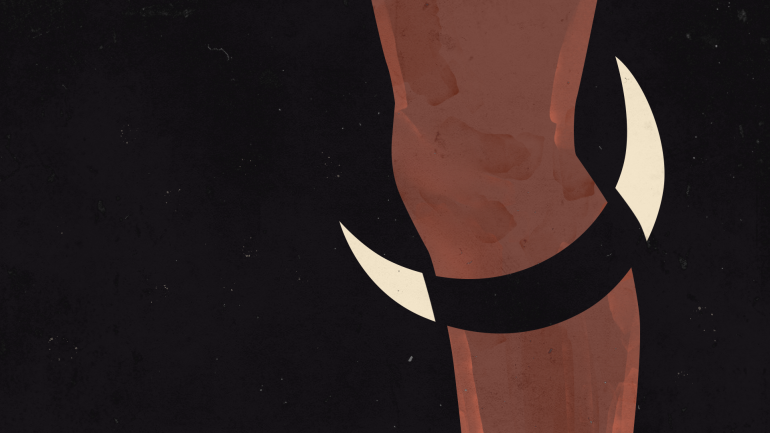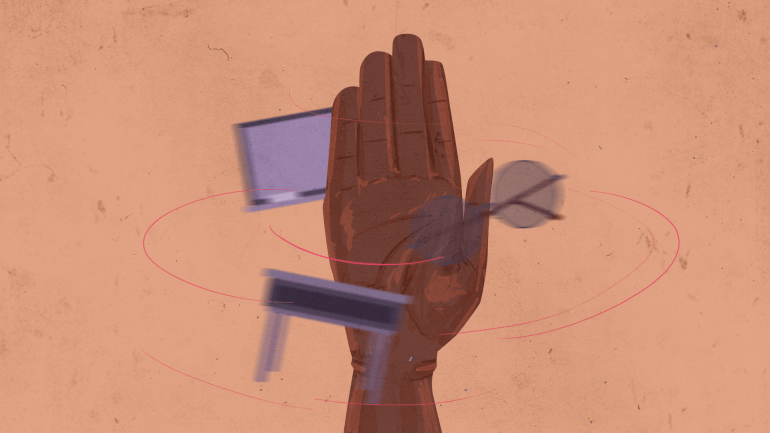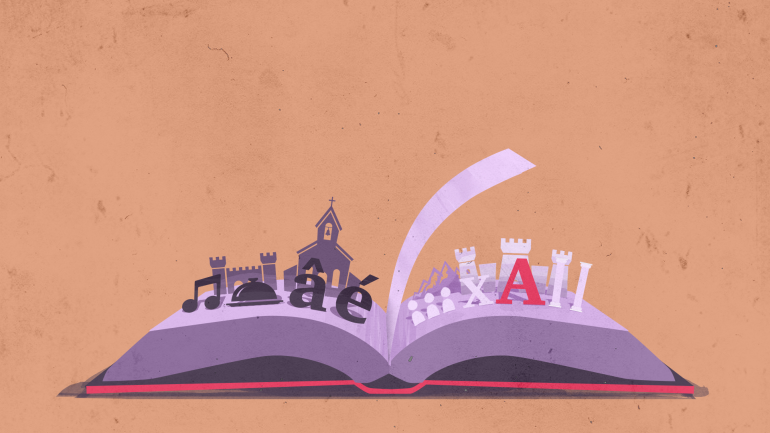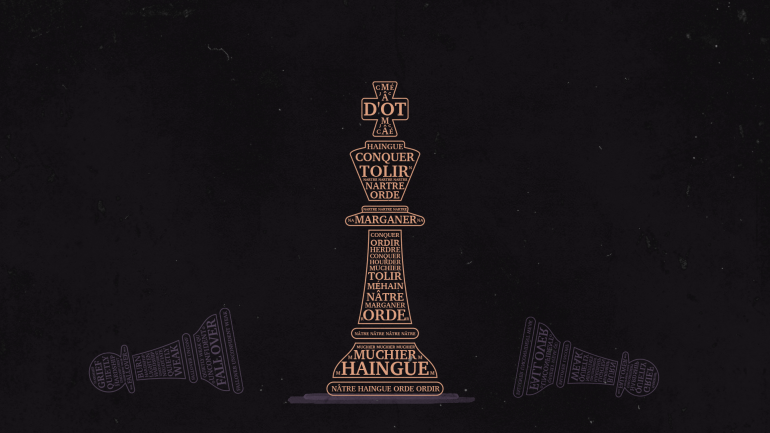The freedom to be: Defining white privilege and white supremacy
It is impossible to describe white supremacy without detailing what it means to be a Black person in America.

I had a crush on a girl named Tamika when I was in fifth grade. Tamika could light a whole room with her smile and high-pitched, hiccup laugh. I was a poetry-loving geek, and more than once, I was kept from a beating by this fearless protector of the weak. She was powerful, but most of that power was kindness.
Tamika had a scar on the inside of her left knee that was shaped like a crescent moon and I used to watch mesmerised as her hand rested on her lap, finger lightly tracing that moon back and forth, back and forth. Sometimes, Tamika would leave school early to be with her mom at work and I imagined going with her.
Keep reading
list of 4 itemsThe problem of performative activism
For the past 50 years, hard work has brought the poor nothing
Dear Amy Cooper, it is not your fault
There’s a sound that still causes me to remember her. It’s the sound of a beaded entry way, or certain wooden wind chimes. The sound of the beads at the ends of Tamika’s cornrows, clicking softly as she moved.
Seeing Tamika was the highlight of my day, but one day, I went to school and she was just … gone.
I thought she was sick, but after three days I became convinced I would never see her smile again, or hear the sound of her cornrows quietly clicking as we talked to one another. When I asked my teacher about her, she simply grimaced and told me to go back to my seat.

On May 30, 1975, Toni Morrison gave a talk at Portland State University titled “A Humanist View”. She began by detailing the language used to describe early American economics, reading from a book entitled The Historical Statistics of the United States: Colonial Times to 1957 – “which documents,” she stated, “in chronological order and by point of destination of import and export, those humans who came to the United States from 1619 to 1769.”
In her speech, she noted that we have generations of scientific study and economic analysis that documents us, the children of Africa’s diaspora, as if we were not people at all. “No group has had more money spent on it to have its genetics examined, its fecundity stopped, its intelligence measured” by “people who know our sperm count, but they don’t know our names”.
We Black Americans are beset by statistics. Numbers, not culture, often describe us as Americans.
- 79 percent: Nationwide average of Black students graduating from public high school, 10 percent lower than their white counterparts.
- 33 percent: Percentage of imprisoned people who are Black – despite Black people making up just 12 percent of the population.
- 23 percent: Percentage less that a home in a majority-Black neighbourhood is valued, compared to a similar home in a similar neighbourhood with few or no Black residents.
Statistics have defined us since the times when the greatest care was taken to detail the “Number of Negroes Shipped”. But, as Morrison noted, those statistics are without names. They are numbers without stories, facts disconnected from the people who fight and suffer.
“Pretty much like the historical statistics is Black American history,” Morrison stated, “a separate book, a separate chapter, or a separate section of origins and consequences of slavery, all of which is related to production and legislature, very seldom to the very fabric of life and culture in this country.”
There is an irony, then, that when we talk about what it means to be Black in America, we ourselves so often fall back on the statistics that define us. Number of us who have died at the hands of the police, or people acting like police. Percentage of us who graduate high school, or who don’t survive it. Studies showing our intelligence is equal to those of European descent, that our educational opportunities are both limited and focused on punishment and incarceration.

I met Tamika again only once. It was years later in high school when I recognised her hiccup laugh from across the room. We were setting up for a debate team competition between her school and mine, and when she saw me her face broke into that sunshine smile.
“It’s so good to see you!” She said. “I knew you’d do something like this, you were always reading all those books.”
We were both the captains of our school’s debate teams and I told her I was happy to debate on the side against capital punishment because it’s really what I believe.
“I don’t believe in capital punishment either,” she said, then she smiled. “But this isn’t about what I believe, it’s about winning – so I’m going to destroy you.”
And she did. Tearing down every argument we made against capital punishment like the goddess Oya tearing down trees with her hurricane breath.
After the event, we had time to talk and she told me why she moved to a different school. “My mama got into a fight with that principal one too many times.”
It turns out Tamika never left school early to spend time with her mother at work. Rather, she had routinely been sent home by school administration because her hair was “inappropriate and distracting”.

It is impossible to describe white supremacy without a detailed accounting of what it means to be a Black person in America. “To define Black people,” as Morrison warned, “as reactions to white presence.”
We are forced to document our culture, our biology, our language not as aspects of our own, which have merit in and of themselves, but as contrasted to the expectations of white America. Even the language we use is white. Words, grammar and sentence cadence forced upon us with neither relation to nor acceptance of our West African heritage.
It is a privilege, you see, to define oneself on one’s own terms, in one’s own language, without even a thought for the existence of another culture. We do not share that privilege. We pour ink onto pages proclaiming our right to exist and in doing so become mere marks set against the background of paper; having a message and meaning, perhaps, but no form without the whiteness of the page to define us. The page, by contrast, exists whether our ink marks it or not.
We, the black marks set against this white page, are forced to consider the paper. What is the shape on which we are written? What form does the pulp take that forces the ink of our existence to smear and skip as we document ourselves against its background?
While it is not a complete picture, this is often how I describe the concept of white privilege. White people have the freedom to be. Not the freedom to be any particular thing, mind you, but the freedom merely to exist at all, without consideration for where and how they are allowed to do so.* By contrast, Black people only are something in relation to whiteness. Our entire existence is defined by how we fit (or too often do not fit) into American – white European – culture.
Three moments in history help to illustrate this.

In the year 1066, Norman France invaded Anglo-Saxon England and forcibly changed their language. The destruction of a conquered people’s language is a useful tool of oppression. So after their invasion, Normans cemented power by making French the official language of the state, and even outlawed English in some cases.** The strategy was so successful that the English speakers themselves began to associate the French language with sophistication and their own English language and culture with vulgarity.
Now it is important to note that William The Conquerer did not believe the English were inferior to the French. Not in any real sense. The portrayal of the English as inferior and the denouncement of their language and culture was only and entirely done to justify their domination. Convincing a people of their own worthlessness is a powerful way to support the structures of economic domination.
It is important we realise this was done simply to dominate, but was so effective that the dominated people believed it themselves and 1,000 years later still do. We still hold French at a higher linguistic register than English, considering French customs more “refined” than Anglo-Saxon. To this day, we smile at a “scent” but wrinkle our noses at a “smell,” we “eat” at a bbq but “dine” at a fancy restaurant. The structures that supported economic oppression 10 centuries ago have become as much a part of our own culture as the pulp of the paper on which we write our history.
Centuries later, similar tools were used during the early years of our country when Africans were brought here as chattel and portrayed as animals. Enslaved men, women, and children were beaten for speaking their own language, beaten for learning to read and write, beaten for walking without proof of passage, beaten merely for not answering to a white man like a trained dog. And this control was enforced by slave patrols. In many places, service in slave patrols was compulsory for all white men. What better way to ensure that a particular portrayal of Black people would become embedded into society than to ensure every white citizen was forced to participate in it?
Much like the Norman subjugation of English culture, slavery and its history was never about the inferiority of Black people. As Morrison so eloquently noted in her speech, it was about economics and power. “Why increase the sons of Africa by planting them in America,” Benjamin Franklin noted, “where we have so fair an opportunity by excluding all the Blacks and Tawneys.” And much like Norman France, the language of oppression became part of our culture and belief. “I entirely agree with you,” wrote Theodore Roosevelt, “that as a race and in the mass, the Negroes are altogether inferior to white people.”
“Nobody really thought that Black people were inferior,” Morrison notes. “Not Benjamin Franklin, not Mr Byrd, and not Theodore Roosevelt. They only hoped that they would behave that way.”
Convincing a people of their own worthlessness is a powerful way to support the structures of economic domination.
The portrayal of Black and Brown people as dangerous, as lazy, as animalistic is so embedded in our culture that, much like dining versus eating, Black people even use the language ourselves. We can see this in an Op Ed by a Black writer in The Independent titled “Charleston shooting: Black and Muslim killers are ‘terrorists’ and ‘thugs.’ Why are white shooters called ‘mentally ill’?”
Did you catch that? Black and Muslim people are “killers” while white people are merely “shooters.” Even when we talk about the different language used to describe Black and Brown people, we use coded racist language to do it.
The very shape of the paper on which we write our own story is the shape of white domination.
When I consider this history, I ask certain questions. White America can cling to even accidental culture such as “eating” vs “dining” for over 1,000 years. Why should we expect Black people to lose the culture of West Africa after only a few generations if not because we find that culture less valid than European culture?
More to the point, if we still cling to the artificial prejudices of the French from 1,000 years ago, what hope do we have of destroying the prejudices of slavers in our own lifetimes?

White supremacy and white privilege, like electricity and magnetism, are two manifestations of the same force. Wrap an electrical wire around a core of iron and you cannot help but generate a magnetic field that attracts metals that are aligned properly while it repels others. When we wrap white culture around the core – the belief that it is “normal” – we can’t help but generate its sibling force, the privilege to know that whiteness is properly aligned, and all others will be repelled.
This is white supremacy. Not so much belief that white European culture is better, as the unconscious acceptance that white European culture is normal. White privilege is the ability to exist within that norm, pulled forward by its magnetism rather than repelled by its invisible force. This is no better illustrated than by the hair of Black women.
White people are allowed the freedom to let their hair simply grow. By contrast, the very biology of Black women is regulated. A Black woman simply allowing her hair to grow is so disturbing to white America that it can only be seen as a political statement. It would be no less revolutionary today than it was when Angela Davis arrived in court in 1971.
- 80 percent: Percentage of Black women who modify their natural hair to fit into a corporate workspace.
Tamika, whose hair was controlled by a style that existed before Europeans existed, was removed from school for hair that was called “distracting”. Yet without braids, she was just as likely to be removed from school, as so many young girls have, because her hair was “unkempt”. Whatever Tamika did, she could be labelled as “wrong”. The reason was not Tamika’s hair, it was that convincing a people of their own worthlessness is a powerful way to support the structures of economic domination. The very biology of Blackness has always been legislated. From Black procreation to Black presence in white spaces to the acceptability of Black hair.
On July 3, 2019, California became the first state to pass the Crown Act, a law preventing discrimination against natural hair and protective hair styles in schools and offices. Some mark this as a triumph, I cannot see why. We have embedded the language of white supremacy so deeply in our culture that in the 21st century we cannot even accept the basic biology of Black people without legislative action. How, I wonder, can white people not see the need for the Crown Act as anything but embarrassing?

“An act to enforce the constitutional right to vote, to confer jurisdiction upon the district courts of the United States to provide injunctive relief against discrimination in public accommodations, to authorise the Attorney General to institute suits to protect constitutional rights in public facilities and public education, to extend the Commission on Civil Rights, to prevent discrimination in federally assisted programs, to establish a Commission on Equal Employment Opportunity, and for other purposes.”
The first paragraph of the Civil Rights Act of 1964, reads as if it is “the most sweeping civil rights legislation since Reconstruction”. Yet in the time since, we have been set by statistics.
- 6.5 percent: 2018 national unemployment rate for Black Americans, over twice as high as that for white Americans.
“It’s important, therefore, to know who the real enemy is,” Morrison wrote in her 1975 speech, “and to know the function, the very serious function of racism, which is distraction. It keeps you from doing your work. It keeps you explaining over and over again, your reason for being. Somebody says you have no language and so you spend 20 years proving that you do. Somebody says your head isn’t shaped properly so you have scientists working on the fact that it is. Somebody says that you have no art so you dredge that up. Somebody says that you have no kingdoms and so you dredge that up.”
Somebody says your hair is inappropriate and distracting, so you dredge that up. But a hair law will not enforce equality any more than the Civil Rights Act did. Black women’s hair is protected, so it’ll be their tone of voice, or their walk, or their clothes. It is not about hair, or about colour, or about gender. As Morrison put it, “there will always be one more thing,” because “the disease is not racism. It is greed and the struggle for power.”
Years ago, when social media was still new, I stumbled upon Tamika’s Facebook page.
She had just announced her partnership in a small law firm fighting against Black incarceration and I saw a picture of her magical smile, matched by her daughter’s. I never connected with her – that whole scene of connecting with everyone you ever knew never sat well with me – but I did read a couple of entries on her blog and learned a bit about her life.
She wrote one post on why she got her law degree. Too many Black men, she wrote, die in prison. Men like her husband, a promising college student picked up for suspicion of drug possession whose life was then forfeit.
Another post was about her hair. Like so many Black women, she chose to straighten her hair and get a “more womanly” hairstyle as a way to appear “more professional” in court. She wrote that she believed in Black women’s right to wear whatever hair style they wanted, but chose the step because she knew she had to in order to be taken seriously in court. Tamika fought her own biology to give her defendants the best chance at fighting for freedom against crimes they often did not even commit. Convincing a people of their own worthlessness is a powerful way to support the structures of economic domination.
*This is a necessarily limited view of privilege because of the topic of this book. I frequently note that similar arguments can rightfully be made regarding my male privilege by women, my cis privilege by LGBTQ people and so on. This description is not meant to limit the discussion, but rather to focus it in this setting.
**I am using “French” and “English” here for simplicity. For the strict definitions and linguistic history of Anglo-Norman and Anglo- Saxon, consult any decent history book.
____
This is an excerpt from Fieldnotes on Allyship: Achieving Equality Together, an informal and informative guide to becoming an effective ally right where you are. Written by 18 authors from the US and around the world, including an introduction by anti-racism educator and author Tim Wise, this anthology presents a different way forward: a vision in which we acknowledge, support, and celebrate the humanity in all of us.
The publisher, Our Human Family, is a 501(c)(3) charitable organisation that advocates for racial equality and inclusion.
Some statistics in this version were updated from the printed essay.
The views expressed in this article are the author’s own and do not necessarily reflect Al Jazeera’s editorial stance.
